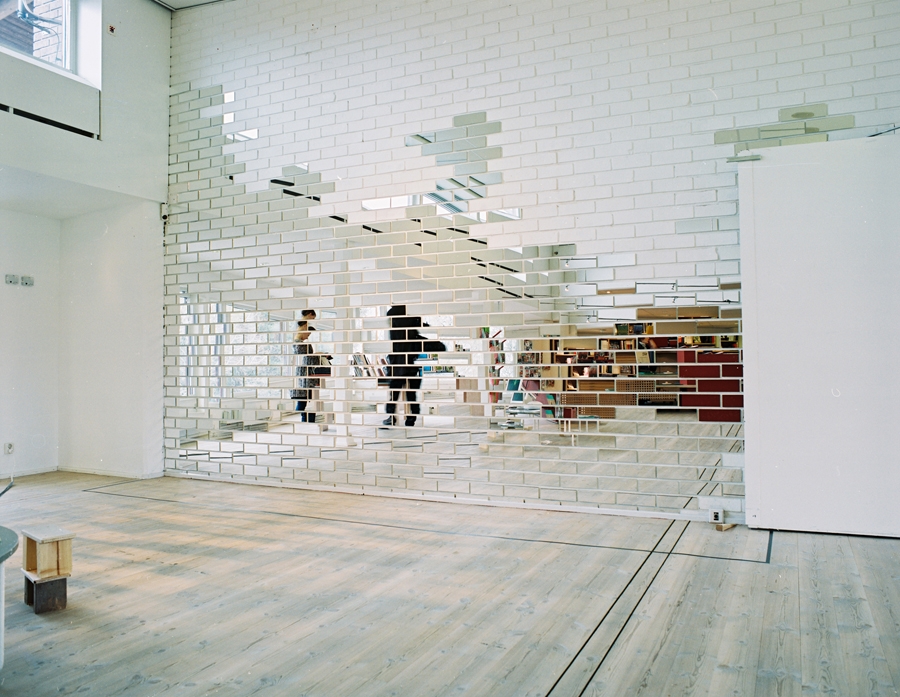Asa Norberg and Jennie Sundén’s obsessively detailed and meticulously arranged As We Go Along (2009–) is an ongoing project inspired by lectures Josef Albers gave at the Bauhaus during the 1920s and at Black Mountain College during the 1930 and 40s. One version of As We Go Along consists of three low platforms (referring to presentations at art schools) with simple shapes made of cheap materials – the sorts of peripheral materials that are always ‘around’: plugs for mounting, sandpaper for polishing and shaping, corrugated cardboard for protecting an object, etc – on top. Beige tape has been cut out to look like filigree, and black plastic has been turned into a delicate net hanging from slender wooden sticks.
Albers, one of the most influential abstract artists of the twentieth century and a legendary teacher, often used inexpensive materials in his workshops, encouraging the students to get the most out of what was at hand so as to learn how to interact with it. Albers used the word ‘magic’ in relation to the moment of transformation of the material, a moment that he called Schwindel (which means both ‘hoax’ and ‘vertigo’). He often drew parallels between form and society, encouraging ‘democratic design’, in which all elements – lines, shapes and colours – were supposed to integrate and ‘get along’. Like Albers, Norberg and Sundén pay close attention to the quality and associations of materials. On top of that, they have an intense concern with detail, carefully crafting objects that have an unclear use value but an apparent beauty. In their hands, democratic design is enveloped in lifestyle and yet retains a sense of magic.
A similar care for even the smallest component of a project comes across in the pair’s curatorial activities, which since 2009 happen under the banner of their project space, Hit. The two graduates from the Umeå Academy of Fine Arts set up this intimate studio-cum-project space in one of Gothenburg’s famous wooden housing blocks (which date from the early twentieth century). In Swedish, hit means ‘in the direction of here’. Within a provincial art scene like Gothenburg’s, Hit has become a welcome attraction, and has introduced artists such as Falke Pisano, Rosalind Nashashibi and Slavs and Tatars to Sweden for the very first time.
This article originally appeared in the March 2012 issue.
